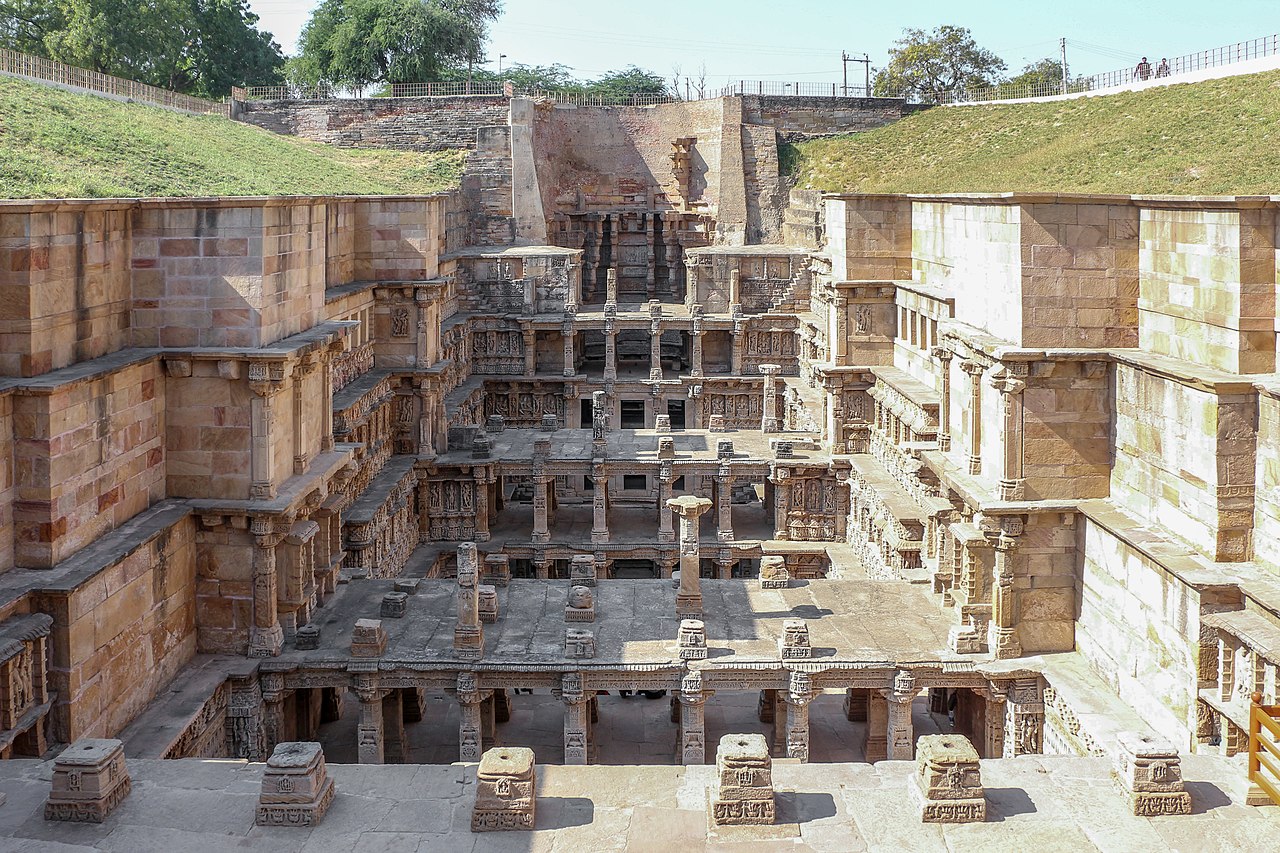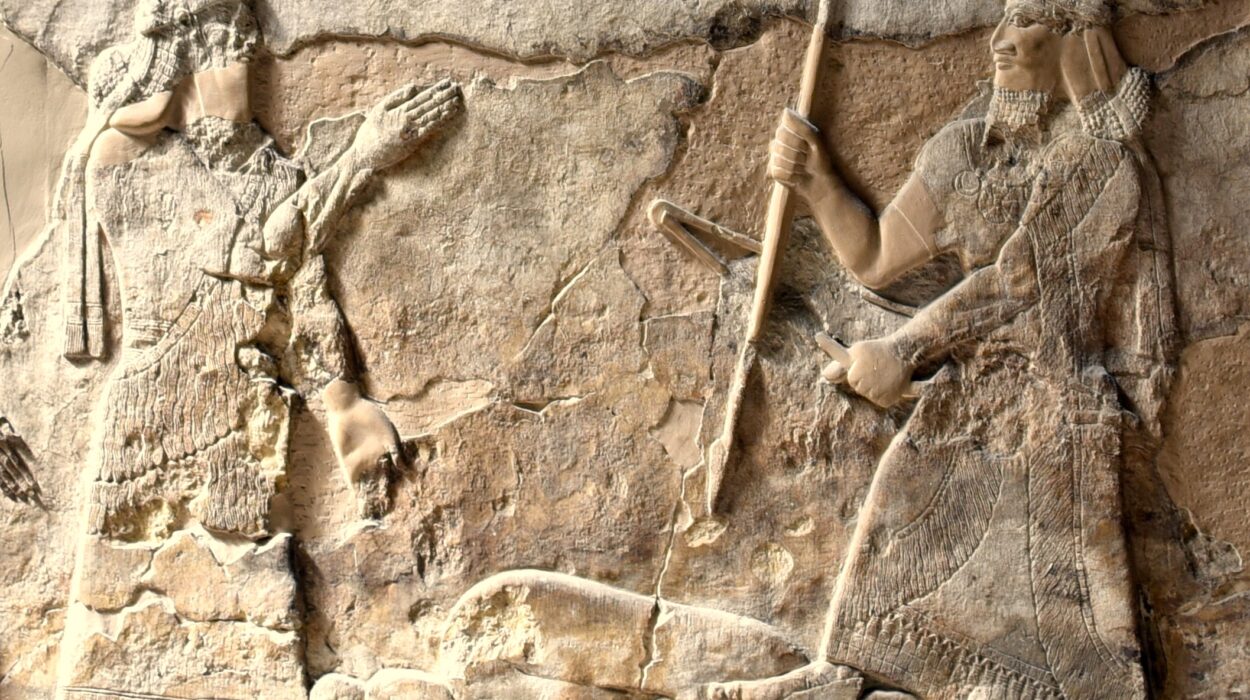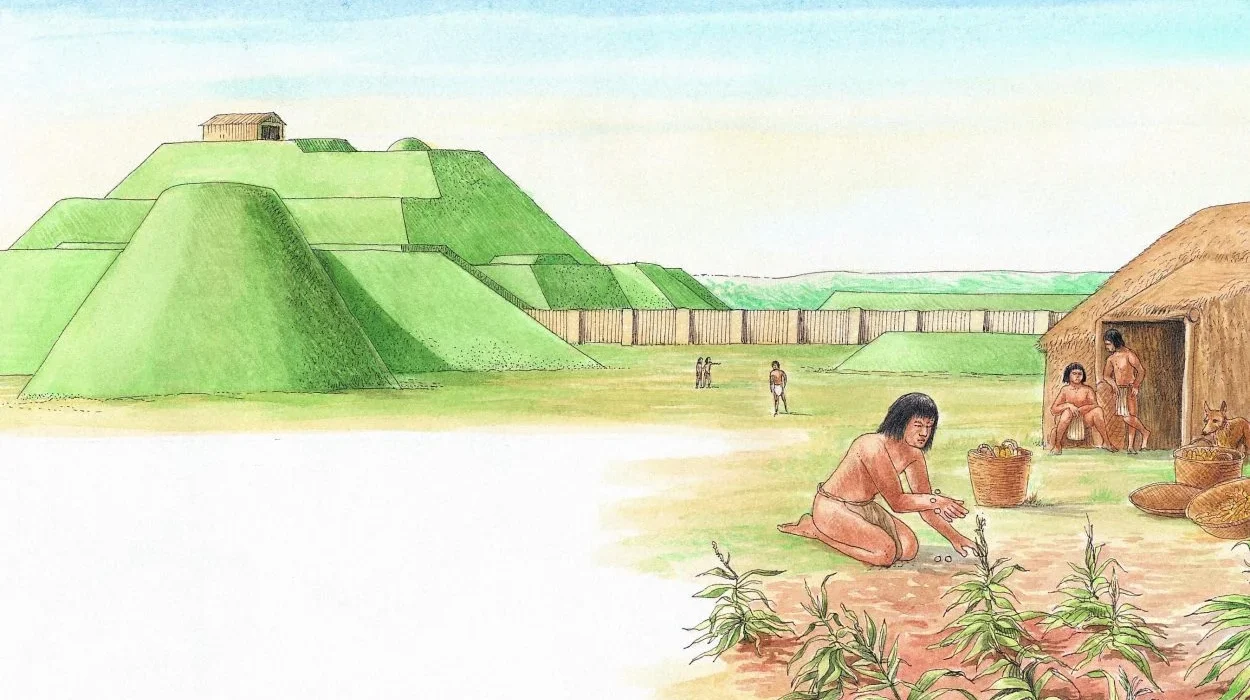Across the dry landscapes of western and central India, beneath the scorching sun and winds that sweep across the plains, lie some of the most remarkable architectural wonders ever created: the stepwells. Known as baolis, vavs, or baoris depending on the region, these subterranean structures are not merely wells. They are living chronicles of human ingenuity, resilience, and artistry. Carved deep into the earth, descending through labyrinthine flights of stone steps, they offered water, shade, and sanctuary for centuries.
To step into one of these structures is to journey into another realm. The air grows cooler with each step, shadows ripple across intricately carved pillars, and the bustle of the outside world fades into silence. These stepwells, some dating back over a thousand years, embody not only the pragmatism of water management but also the profound spiritual, social, and cultural values of the communities that built them. They are India’s hidden cathedrals of water, where engineering met devotion, and where the rhythm of human survival merged with the pulse of the monsoon.
Water in a Thirsty Land
The origins of stepwells are inseparable from the story of India’s climate. Much of the subcontinent, particularly the states of Gujarat, Rajasthan, Madhya Pradesh, and parts of Delhi and Karnataka, experiences extreme seasonal variations. For months, the land bakes in unrelenting heat, rivers dry up, and wells sink into emptiness. Then, with the arrival of the monsoon, torrential rains flood the parched soil, swelling rivers and filling tanks. Managing this unpredictable rhythm of abundance and scarcity was not a matter of convenience—it was a matter of survival.
Stepwells were humanity’s answer to this challenge. By digging deep into the earth, builders reached aquifers and groundwater that remained even during drought. The stepped design was no mere ornament; it allowed people to access water at different depths as the water level rose and fell. During years of plenty, the upper steps were enough. In times of drought, villagers descended deeper and deeper into the earth, sometimes walking down seven or more stories to find the precious liquid.
This ingenious system turned water storage into a communal experience. Unlike ordinary wells, stepwells invited entire communities to gather, bathe, and rest within their cool, shaded interiors. They were not only feats of hydrology but spaces of human connection.
The Architecture of Descent
Stepwells are among the most extraordinary architectural innovations in history. Their design blends geometry with gravity, function with grandeur. At their simplest, they are long, narrow corridors lined with descending staircases leading to a central water tank. But the finest stepwells surpass mere utility, becoming vast subterranean palaces.
Constructed from sandstone, granite, or brick, these wells often extend several stories below ground, with flights of steps arranged in linear, square, or spiral patterns. Many feature pillared pavilions, shaded galleries, and carved niches that provide resting spots along the descent. The act of moving downward into the earth was itself symbolic, an architectural journey from the blinding heat of the surface into the cool sanctuary of water and stone.
What makes stepwells truly breathtaking are their embellishments. Walls are adorned with sculptures of deities, celestial dancers, floral motifs, and scenes from epics like the Mahabharata and Ramayana. Some are so finely carved that they rival the ornamentation of temples. These embellishments remind us that stepwells were not simply functional—they were sacred spaces, consecrated to gods and infused with spiritual meaning.
Spirituality and Symbolism
Water has always been more than a necessity in Indian culture. It is a purifier, a source of life, and a divine element. Rivers like the Ganges are worshipped as goddesses, and ritual bathing has been central to Hindu practice for millennia. Stepwells extended this reverence into the landscape.
Descending into a stepwell was not merely a physical act; it carried symbolic significance. The downward journey echoed the descent into the womb of the earth, into realms of fertility and renewal. Emerging again into daylight mirrored rebirth and purification. Many stepwells were dedicated to goddesses such as Ganga, or to local deities associated with fertility and abundance. In some regions, they were linked with rain and monsoon rituals, reinforcing the bond between humans, water, and the divine.
Stepwells were often constructed near temples or even integrated into temple complexes, blurring the line between sacred and practical architecture. The carvings of Vishnu, Shiva, or Devi on their walls transformed the act of fetching water into a pilgrimage. In this way, every sip drawn from a stepwell carried with it a sense of ritual and reverence.
Centers of Community Life
Stepwells were not only about water or worship; they were vibrant centers of community life. In a world without air-conditioning, these subterranean spaces offered a cool refuge during the blistering summers. People gathered here not just to collect water but to rest, exchange stories, conduct trade, and celebrate festivals. Women in particular found in stepwells a social space, as they were the primary water-bearers in most villages.
Some stepwells were designed with elaborate pavilions that functioned as meeting halls. Travelers, merchants, and pilgrims could find shade and shelter here, transforming these wells into vital nodes of connectivity across trade routes. Weddings, dances, and community gatherings often unfolded in their shaded depths.
The very design of stepwells encouraged communal interaction. Unlike a single bucket lowered into a shaft, these wide, tiered spaces allowed dozens of people to move together, ascending and descending in rhythm with the cycles of need and abundance. In their silence, one could hear the hum of collective life.
The Patronage of Kings and Queens
The construction of stepwells required immense resources, skilled labor, and artistic vision. They were often commissioned by kings, nobles, and wealthy merchants. Yet, fascinatingly, many of the most famous stepwells were built under the patronage of queens and women of royal households.
One of the most iconic examples is the Rani ki Vav in Patan, Gujarat, a UNESCO World Heritage Site. Built in the 11th century by Queen Udayamati in memory of her husband, King Bhimdev I of the Solanki dynasty, this stepwell descends seven stories deep and is adorned with over 1,500 sculptures. Each wall and pillar is a canvas of exquisite craftsmanship, narrating stories of gods, celestial beings, and mythical scenes. Rani ki Vav is often described as an inverted temple, with water as its sanctum.
Other queens, noblewomen, and philanthropists followed suit, commissioning stepwells not only as monuments of devotion but as acts of public welfare. In a land where drought could devastate entire communities, building a stepwell was an act of compassion and legacy.
Regional Flourishing
Stepwells flourished particularly in the arid and semi-arid regions of India. In Gujarat and Rajasthan, where summers are merciless and rainfall erratic, thousands of stepwells once dotted the landscape. From grand royal constructions to modest village wells, they provided lifelines of water and culture.
In Delhi, remnants of stepwells such as Agrasen ki Baoli and Rajon ki Baoli stand as silent witnesses to medieval urban life. Karnataka and Andhra Pradesh, too, boast their own versions, where the architectural styles differ yet the purpose remains the same. Each region adapted the stepwell to its geology, climate, and cultural context, resulting in a dazzling variety of designs.
Decline and Obscurity
The decline of stepwells began with the arrival of modern water technologies. As pipes, pumps, and taps spread across cities and villages, the need for communal wells diminished. Many stepwells fell into disuse, their stairways filling with silt, their carvings eroded by neglect. Some were abandoned, others misused as dumping grounds.
Colonial administrators in the 19th and early 20th centuries, while documenting stepwells, often dismissed them as unhygienic. Modernization prized speed and efficiency over tradition, and the slow descent into the earth to fetch water became obsolete. With each passing decade, these magnificent structures slipped further into obscurity, hidden beneath the dust of time.
Rediscovery and Revival
In recent decades, stepwells have experienced a renaissance of interest. Historians, architects, and conservationists have recognized their value as cultural and ecological treasures. UNESCO’s recognition of Rani ki Vav in 2014 brought international attention, shining a spotlight on the artistic brilliance and engineering mastery of stepwells.
Restoration projects have sought to clean, preserve, and revive several prominent stepwells. In urban centers like Delhi, Agrasen ki Baoli has become a popular destination, blending historical curiosity with cultural imagination—it has even appeared in films and literature. In Gujarat and Rajasthan, heritage walks and eco-tourism initiatives bring visitors into the depths of these structures, allowing them to marvel at their cool interiors and sculpted beauty.
But beyond tourism, the revival of stepwells holds practical promise. In an age of water crises and climate change, these ancient systems remind us of sustainable ways to harvest and store water. By reactivating and conserving stepwells, communities can tap into groundwater reserves and adapt to modern challenges.
Lessons for the Present
Stepwells are not relics to be admired only for their beauty; they are blueprints for resilience. They embody a philosophy of coexistence with nature, where architecture worked with the rhythms of climate rather than against them. In their shaded chambers, one finds the wisdom of slowing down, of respecting water as sacred rather than as a commodity.
At a time when India faces recurring droughts, erratic monsoons, and increasing urban water scarcity, the revival of traditional water systems is more than nostalgia—it is necessity. Stepwells demonstrate how communities once thrived in harmony with harsh climates. Their reintroduction could inspire a new generation of sustainable water management.
The Enduring Mystery and Beauty
To stand at the edge of a stepwell is to confront a paradox. From above, many appear as modest square openings, easily overlooked amid modern chaos. But as you descend, step by step, a hidden world reveals itself—pillared corridors, geometric patterns, walls adorned with gods, and finally the shimmering surface of water deep below. It is a journey inward, both physical and spiritual.
Even in ruin, stepwells hold an almost mystical allure. Their silence is not empty; it is full of echoes—the voices of women drawing water at dawn, the laughter of children playing in the shade, the chants of pilgrims, the weary sighs of travelers finding rest. They are time machines, where every carved stone whispers of lives once sustained, of prayers once spoken, of communities bound together by water.
Conclusion: Wells of Memory
The ancient stepwells of India are more than architectural curiosities. They are profound symbols of human adaptation, cultural imagination, and reverence for the natural world. They remind us that survival can be an art, that utility can be infused with beauty, and that even in the harshest landscapes, communities can create sanctuaries of life and meaning.
As we rediscover these marvels, we are called not only to preserve them as heritage but to learn from them. In their depths lies a wisdom urgently relevant to our age: that water is not merely a resource but the very essence of life, deserving of respect, protection, and celebration. The stepwells are India’s gift to the world—a reminder that the deepest wells are not only those that hold water, but those that hold memory, culture, and the enduring spirit of humanity.






